You hear golf instructors say it all the time: "You need to swing on plane."
But what are they really talking about? In this post, I will be explaining everything that you need to know about the inclined plane that your golf club swings on. The concept is a rather simple one at the core, but without starting from the beginning, I believe that most golfers only have a blurry understanding of what the inclined plane really represents, and a poor understanding of what being "on plane" means.
The first step in understanding the inclined plane in relation to the golf swing is to take a look at the bare-bones definition of what a plane is, and explore why it is a 2-dimensional space in the first place. Take a look at the picture below:
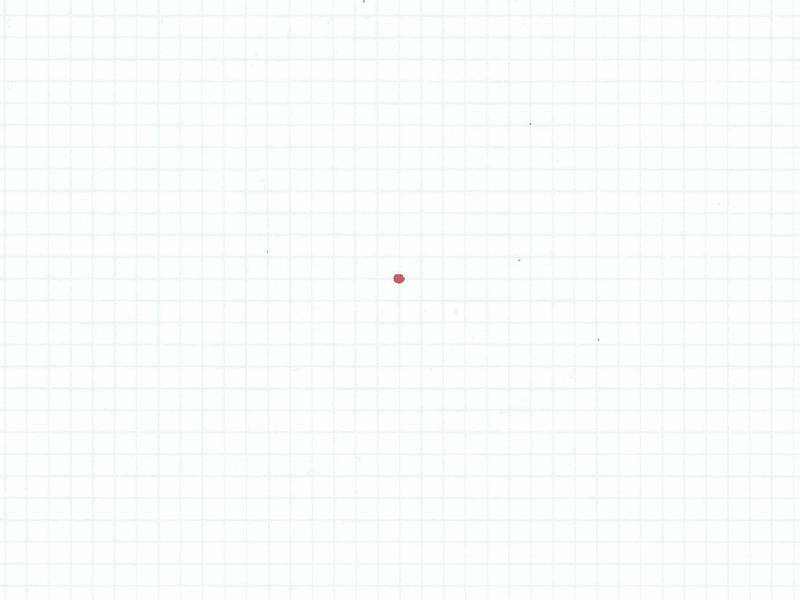
This is a point. It encompasses zero dimensions.
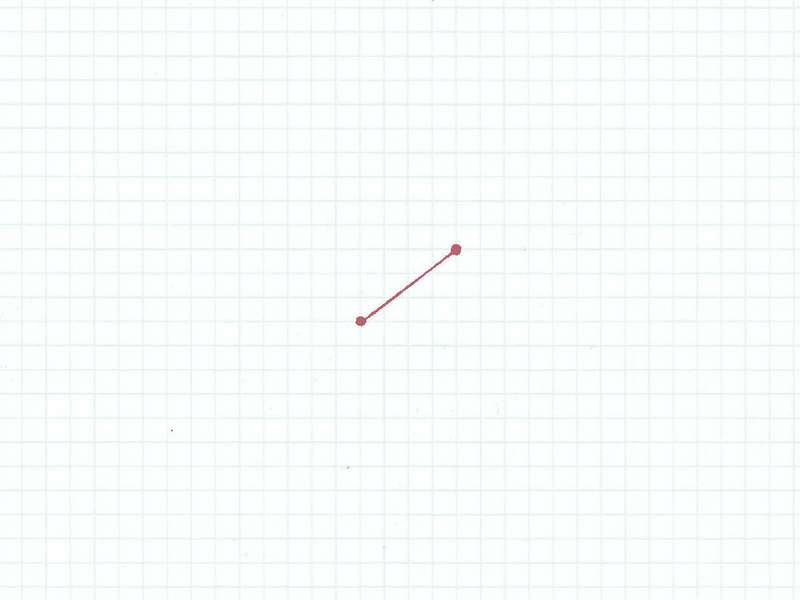
This is a line. We define a line as one-dimensional, because from point A to point B, a "point" can only move on a straight line of motion. If we add another point that does not rest in a straight line relationship with point A and B, we get a plane:

Most golfers have an intuitive understanding of the "plane" concept, but not a real understanding of why it matters in golf. Essentially, the plane is what we deem as two-dimensional, because a point can move both in the horizontal and vertical direction. In the photo, you could move in a straight line from point A to point B, or you could move in a straight line from point A to point C, all the while remaining in that "plane." The plane may be defined as a "flat surface that is infinitely large and with zero thickness." So while many visual representations will look like a sheet of paper, just know that the plane extends infinitely in the vertical direction, and infinitely in the horizontal direction.
Finally, look at the photo below. This is what we call three-dimensional, or in other words, "space." Although some accomplished scientists (hint: Albert Einstein) may debate over how many dimensions we are actually living in, this is a golf site, so we are going to assume that what we see is what is real, and we are in fact living in three dimensions:
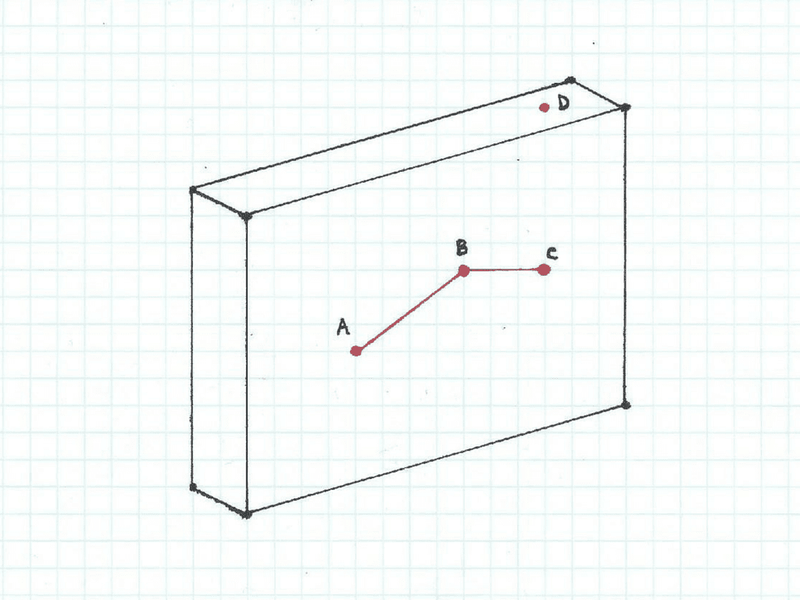
As you may infer, the golf swing happens in three dimensions. The object above represents not only height and width (x and y directions), but also has depth (z direction). This is basic Euclidean geometry taught in most schools these days.
To realize how the concept of a plane is useful in the golf swing, we need to understand the angular motion that a golf club travels in. Below is the most basic representation of angular motion:
Substitute the tennis ball with the golf club; the shaft with the string, and you've got the basic motion of a golf swing.
In the video, we see an object moving in a vertical plane of motion, being held in that plane by centripetal force. Take a look at the photo below:

At any point in the motion of a golf swing in a vertical plane (which is not actually possible for humans), you can see that the club-head is moving through the plane in two directions at once, which we can add together through vector addition to get the tangential velocity that the club head is moving in (see below). Now, take that tangential velocity vector, and measure the angle between it and the ground, and you've got what Trackman refers to as the "angle of attack." Since the tangential velocity vectors are not only changing in magnitude and direction, we can say that the angle of attack is constantly changing as well:

If you look at the above photo, there is a time during the angular motion on the vertical plane where the club head has an angle of attack of zero (parallel to the ground). This is called the "low-point" of the golf swing. As you can see by the picture above, as you move further away from the low-point, the angle of attack increases. Also note that since we are in a perfectly vertical plane, that angle changes rather quickly as we move away from low-point.
So far, all of this is quite simple, but now, let's consider this same angular motion, but on a horizontal plane. If this doesn't make sense, imagine the tennis ball rotating around a fixed point on flat ground, similar to this toy.
Just like we did with the angular motion in the vertical plane; we can do with the angular motion in the horizontal plane. The tangential velocity vectors still change throughout the swing, but this time, the angle formed by the tangential velocity vector and ground is ZERO, and thus the angle of attack is zero at all points in this plane of motion.
But if we have no "angle of attack" in the horizontal plane of motion, then what is there to measure?
Consider the photo below:

Above, we have the angular motion of a club-head in a horizontal plane, with a straight line at the "base" of the angular motion which represents our target line. Imagine that you could somehow swing a golf club completely flat, and that straight line was where you were aiming. Obviously, this isn't possible, but will help clarify the second Trackman term which we call "club-head path angle." The club-head path angle is the angle between the tangential velocity vectors at each point in the swing and the straight target line (or also known as the straight line base of the inclined plane). Once again, the further we get away from "low-point" (which is really not "low-point" because this is a horizontal plane of motion), the greater the club-head path angle is.
Now that we have independently defined both attack angle and club path angle, it is finally time to consider what an inclined plane is.
An inclined plane is any plane that sits at an angle between the vertical and horizontal planes that we just talked about above. Here is a visual (with the horizontal and vertical planes for added perspective):
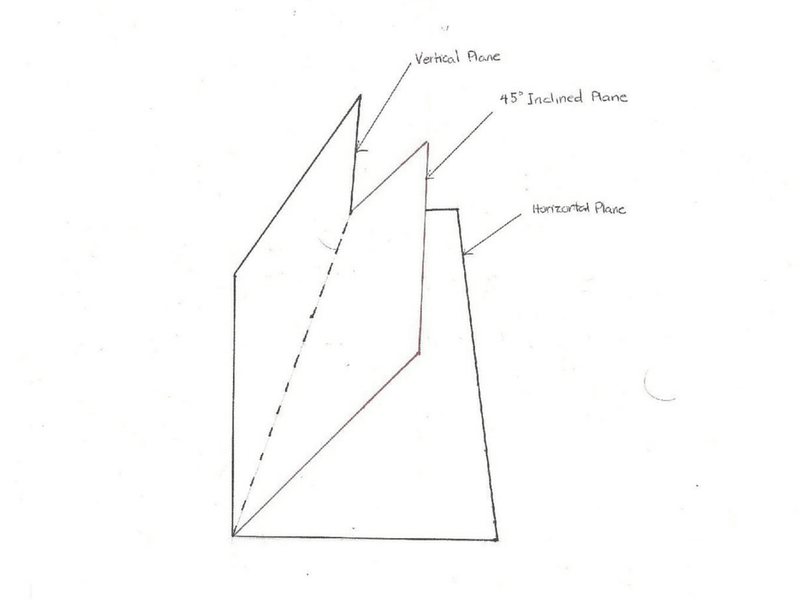
This is where things start to get tricky, because the inclined plane plays tricks on our eyes, especially when we view the golf swing from a face-on view. It appears to us as a vertical plane, just like the sketch earlier in this post. Thus, when looking at the inclined plane from face on, we only see the angle of attack, and fail to see the club path angle.

As you can see above, the FO view (face on) of the inclined plane appears entirely vertical, and we are disillusioned into thinking that the angles formed by the tangent vectors are angle of attack measurements, when in reality, these vectors represent a combination of both angle of attack and club path angle. In my post about the D-Plane, this vector is referred to as "line 1."
But there is still something that might be fuzzy in your mind. Don't the angle of attack and club path angle change at different rates based on how "vertical" or how "horizontal" the plane of angular motion is (i.e. based on what club you are using)?
A good way to think about this is to simply imagine that the inclined plane is the sum of the vertical and horizontal planes. If the inclined plane is at an angle greater than 45 degrees, then the vertical plane has a greater share of that total sum. If the inclined plane is at an angle less than 45 degrees, then the horizontal plane has a greater share of that total sum.
Additionally, you can associate angle of attack with the vertical plane and club path angle with the horizontal plane.
So if you are swinging on an inclined plane of 60 degrees (roughly a 9-iron), then the vertical plane has a greater share of the total sum, and therefore, the angle of attack is going to be greater than the club-path angle at any given point of the swing arc (except low point - where both equal 0)
As you shift the plane to a steeper angle, the attack angle will be changing at a much greater rate as it approaches low-point, while a plane with a shallower angle will result in the club-path angle changing at a much greater rate as the swing approaches low point.
With our knowledge of how curvature on the golf ball is determined and how spin/distance is determined, we can derive the following conclusion about the angle of the inclined plane:
Steeper planes (wedges and short irons) will result in large variances of distance, and small variations of direction, while shallower planes (woods and long irons) will result in large variations of direction, and small variations in distance.
This conclusion may appear trivial, but has several practical applications. For example, Bryson Dechambeau used this knowledge to create a single length set of irons that are all set to the same plane angle. By doing this, he has created the best of both worlds when it comes to accuracy and distance control through all of his irons. His long irons may sacrifice a small amount of distance control, but by putting them on the plane of a 7-iron, he has gained tremendous accuracy. Likewise, his wedges and short irons may suffer some directional control, but have gained more distance control, which is essential from 100 yards and in. It is no mistake that these clubs have worked so well for him thus far.
Now that we have covered the boring part of this post, let's get into the stuff that everyone really wants to know:
How to Get "On Plane"
I've talked a lot about how the inclined plane is constructed, but what everyone wants to know is how to get "on plane," and why getting "on plane" is important to hitting powerful and straight golf shots.
Centrifugal Force Puts the Club on Plane
Note: in purely technical terms, centrifugal force is not a real force, but I will be using it throughout the instructional series to keep things simple.
You might find it surprising when I say that every golfer is on plane, because certainly there are "off-plane" golf swings right?
Trackman measures the plane of each swing by tracing the path of the club's geometric center (COG) from just below waist high on the downswing (P6), to just below waist high on the through swing (P8). Since the club is being propelled in an angular motion, and this type of motion naturally pulls the mass at the end of the shaft in line with the direction of motion, EVERY golfer is on plane; at least throughout the later part of the downswing and early part of the follow through when centrifugal force has overpowered the body's ability to manipulate the club.
In their internationally acclaimed study alongside the Golf Society of Great Britain, Alastair Cochran and John Stobbs performed an experiment with professional golfers where they would turn the lights off at different points in the golf swing. The goal was to determine at what point the golfer loses all conscious control of the golf swing. They found that just a few milliseconds into the downswing, the golfer loses conscious control, and has no power to manipulate where the club travels through the ball. The professional golfers that they tested were able to successfully strike a golf ball in complete darkness when the light was removed during the downswing. When the light was removed sometime before the downswing, the story was different. These same pros struggled to make solid contact with the ball when the light was removed prior to their start down motion.
Complementary to this conclusion, these researchers also determined that the club stays on virtually the same plane throughout the majority of the downswing (roughly P5-P7).
What does this tell us?
Well, it means that in order to hit the ball with any accuracy, we must put that golf club on an "optimal plane" at the transition point of the golf swing. I have queued up the video below to demonstrate Ryan Moore's transition. Notice how he redirects the club dramatically during this transition. This motion is not recommended to any golfer, as it requires large amounts of practice to be able to redirect the club onto an acceptable plane in that short of a time period:
I talk about this later during the transition chapter of the instructional series, so I won't get into much detail here. Anyways, no matter how poorly you swing the club, you are going to be on some sort of plane. This plane may be pointing in the wrong direction, but there is no doubt that it is "on plane." Here is a screenshot of a video that I recorded of myself, and have traced the club-head through the interval that Trackman measures a golfer's plane:

This video has been taken at an angle, so my actual plane is pointed slightly left of where it appears in the photo. I have selected this particular angle because it gives a better view of the plane.
So if everyone is on plane, I guess the better question we might ask is: "What is the best plane to direct our club to during that transitionary period of the downswing?"
The Optimal Plane
The truth is, no such plane exists.
Before I go explaining this statement, we must define two terms, which will be used rather frequently throughout the remainder of this instructional series.
Impact Interval - the area of motion from the time that the club shaft is parallel to the ground on the downswing (P6) to the time that the club is parallel to the ground on the follow through swing. (P8)
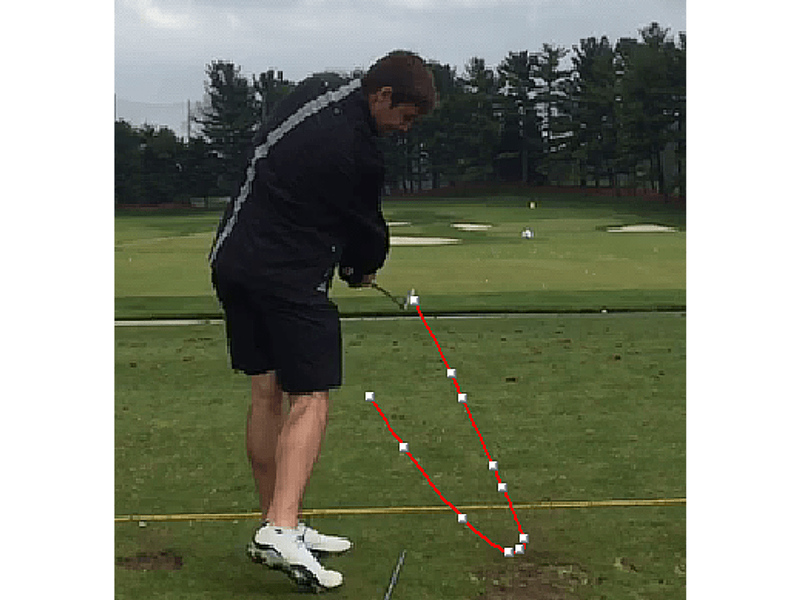
Plane Angle - this is the angle that the inclined plane forms with the flat ground.
Plane Direction - this is the direction that the baseline of the inclined plane points relative to the target line (for example, if a right-handed golfer is aimed at a tree straightaway in the distance, and has an "over the top" motion, the plane will point left of this tree during the impact interval).
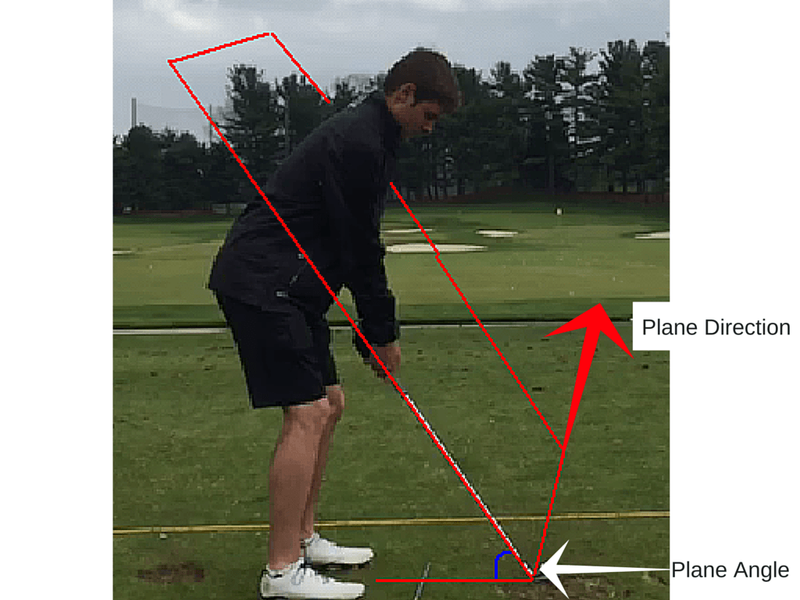
The above photo is by no means 100% precise, but it adequately represents these two terms. The plane angle is simply the shallowness or steepness of the swing arc, while the plane direction is where the base of the inclined plane is aimed. This is not the same thing as the target line, although it can match the target line if the golfer is aligned perfectly to the target, and swings perfectly along the plane that was established at address (neither "over the top" or "underneath" the plane during the impact interval). In the remainder of this instructional series I will often use these two terms interchangeably because it dramatically simplifies my explanations.
Now that you are clear on these terms, let's explore that "optimal plane" concept a bit more..
I believe that Homer Kelley explains this best when he says: "There are some very simple but very accurate checks for being 'on plane.' Whenever the clubshaft is parallel to the ground, it must also be parallel to the base line of the inclined plane, which is usually (but not always) the line of flight also. Otherwise, the end of the club that is closest to the ground must be pointing at the base line of the inclined plane, or extensions of that line..."

In the frames above, you can see the concept visually. All three frames are taken during my backswing, and as you can see, for the most part, I am able to trace the straight line base of the inclined plane. You can also see this in action with my laser takeaway drill:

The laser takeaway drill is the simplest and easiest way to learn what an "on-plane" takeaway feels like.
So moving forward, we can define the "optimal plane" as—the path that the club moves as it traces the straight-line base of the inclined plane
We have clear definition, but unfortunately, there is a HUGE problem with trying to determine whether or not your club traces the plane by looking at a static DTL view of the swing as shown above. First off, depending on camera angle, we may have a slightly distorted view of the plane. Second, by drawing extensions of the shaft as if there was a laser pointing out of the end of it, we don't really know where it is pointing. See the photos below:

As you can see above, just by manipulating the length of the "laser" line pointing out of the end of the shaft, I have all of a sudden gone from being "on plane" to extremely off plane. In reality, this laser extension of the shaft is pointing at precisely 1 finite location on the ground, and as you can see through these photos, it is impossible to find that exact point by using this video view. The best way to determine whether or not the club is tracing the base of the inclined plane is looking at the club when it is parallel to the ground. At this point, the club should also be parallel to the base of the inclined plane. There are four places during the swing where the club should be parallel to both the ground and the base of the inclined plane:

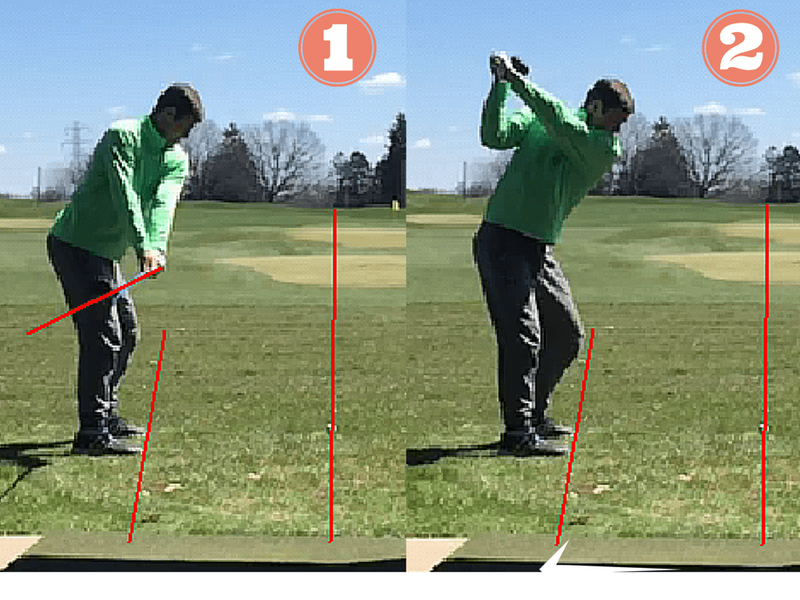

The face-on view is simply a way of visually demonstrating these four positions. This does not indicate whether or not the swing is tracing the plane line adequately or not. The down-the-line (DTL) view is where you must check to make sure that these four positions are parallel to the base of the inclined plane (the red line tracing through the ball).
As you can see in the DTL views, I am "on plane" at all points except position #1, where the club has gotten a bit too far inside (pointing right of the base of the inclined plane).
But is this a big deal??
That leads us into another discussion:
Shifting of Plane Angles vs. Shifting of Plane Directions
In the section above, I discussed what the "optimal" plane is, and how you can achieve by "tracing the base of the inclined plane." If you are still blurry on this concept, I suggest watching this video again.
Although this is the optimal plane, there are certainly great golfers who in fact don't trace this straight plane line throughout the entire swing.
Ryan Moore
Jim Furyk
Bubba Watson
It is quite clear that there are multiple ways to get the ball to the hole:
What all of these golfers have in common is the fact that they shifted plane directions throughout the swing. Unlike the "model" golf swing, these unorthodox players did not "trace the plane" at all during the backswing. If you extended a laser through both ends of their golf clubs, that laser would be pointing anywhere but the base of the inclined plane.
But let's remember, during the backswing, the golfer still has the ability to consciously make adjustments to the plane, and can save the swing during the transition. It is not until a few milliseconds after the start of the downswing where the golfer must be on an "optimal plane." Although these professional golfers have shifted their plane direction dramatically throughout the backswing, they all shift their plane direction back on an "optimal plane" during the transition period of the swing (discussed in more depth later in the instructional series).
Shifting of Plane Direction
When I say "shifting the plane direction," I am referring to a swing in which the base line of the inclined plane at address (P1) points in a different direction during various portions of the swing. As you can see in my swing a few months ago, I had "shifted plane directions" during my early backswing (1), and had returned (shifted back) to the original plane at the top (2) and throughout the remainder of the swing (club is parallel left of the straight line base of the inclined plane at the top, but is not parallel during the takeaway):
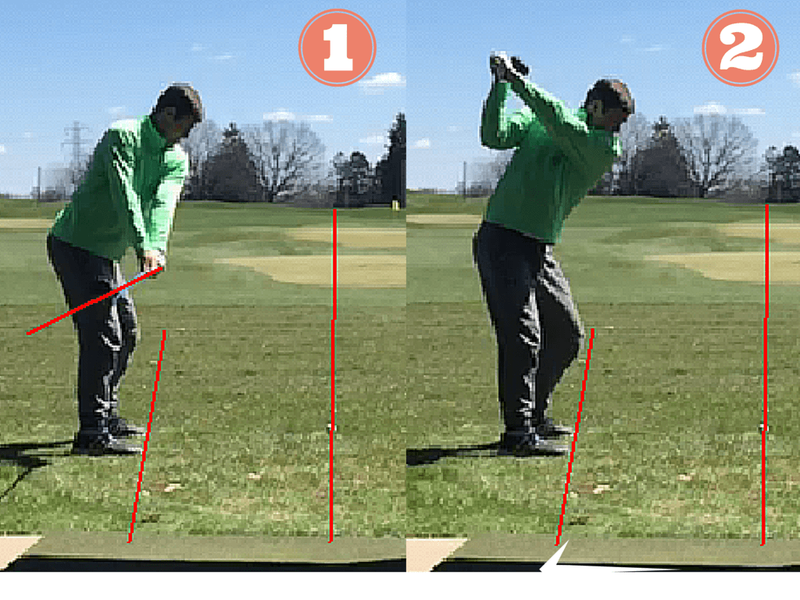
In general, a golfer should stray away from shifting the plane direction throughout the swing. Sure, there are exceptions to the rule, as shown with the professional golfers in the video above. But if we are being rational thinkers, it makes a lot more sense to trace a straight plane line than to emulate Jim Furyk's swing. If we successfully trace the straight plane line throughout the entire backswing, there is little to no "redirection" of the club during the transition to get it back on plane. It is already there!
If a golfer cannot maintain one plane direction throughout the entire swing (due to physical limitations or deeply ingrained habits), it is still possible to strike the ball consistently and accurately. That being said, this golfer must shift the plane direction back to the original plane direction set at address during the impact interval (aka the "optimal plane"), or put up with pulls/pushes.
This would mean that the club is parallel to the ground and the baseline of the inclined plane at positions #3 and #4 in the photo below:

Shifting of Plane Angle
So far, we have established that ideally, the golfer should avoid shifting the plane direction throughout the swing, but what about the plane angle?
Unlike shifting the plane direction, shifting the plane angle is 100% acceptable, and depending on the golfer's setup, may be 100% necessary. This is simply due to the shape of our bodies. During a shift of the plane angle, the golfer can still be on the "optimal plane," but is increasing/decreasing the plane angle throughout the swing.

As shown in the above series of images, my swing plane angle increases from address position to the top of the backswing, and then decreases slightly from the top of the backswing through impact. This is a demonstration of shifting the plane angle.
Distinctions
The best way to understand these two abstract concepts is by watching a real golf swing. Below I have linked to three golf swings based on different plane angle shifts.
Zero plane angle shift, zero plane direction shift:
Notice how Bryson not only traces the base of the inclined plane, but he also keeps the club at the same angle from address through the finish.
Plane angle shift, but no plane direction shift:
Tiger traces that straight plane line, but his downswing is at a steeper angle than at address.
Plane angle shift, plane direction shift:
Although Bubba eventually reaches that "optimal plane" during the downswing, he shifts the plane direction and angle from the beginning of the backswing through the downswing.
No plane angle shift, plane direction shift:
Unfortunately, I could not find a swing that represents this combination. A zero plane angle shift is rare, and those golfers who do maintain the same plane angle also seem to maintain the same plane direction. I reckon this combination is possible, but unlikely.
The 3 Planes
Since most golfers shift planes throughout the golf swing, there are three planes that I will often reference to throughout the instructional series which I have shown in the picture below:

1. Shaft Plane - The red line represents the shaft plane, which is the plane angle formed when the hands are at address. Most golfers never return to this plane after the golf swing starts, mainly because at impact, the right elbow will be slightly bent, which makes it nearly impossible to get the club on this plane again.
2. Elbow Plane - The elbow plane is an important plane, because it generally represents the plane angle at which impact occurs. This plane is drawn through the elbow region of the right arm at address (see this awesome explanation of the elbow plane by The Swing Engineer).
3. Right Shoulder Plane - The right shoulder plane is the plane formed between the ball and the right shoulder at the top of the backswing. This is different than the plane formed between the ball and right shoulder at address. Many instructors recommend that the left arm and shaft should be on this plane at the top of the swing (although this is not mandatory).
Throughout the golf swing, the club-shaft is gradually shifting between these three planes (unless you are a true "one-plane" swinger like Bryson Dechambeau and Moe Norman).
Quick Review
So far, we have covered four major concepts:
- How the inclined plane works - angle of attack and club path angle; a 3 dimensional golf swing
- The "optimal" plane - tracing the base of the inclined plane
- Shifting the Plane Direction
- Shifting the Plane Angle
By understanding how the inclined plane works, we have a better idea of why we should care about the inclined plane in the first place. Essentially, the angular motion of the golf stroke pulls the clubhead and clubshaft in an inclined plane, and therefore, we want to direct that motion in a proper direction (plane direction), otherwise, the ball will fly to some interesting places that most golfers do not enjoy being in.
By understanding the "optimal plane," and the two ways that the plane can be altered during the swing (shift of angle vs. shift of direction), we have a basic understanding of where the club should be at different points in the swing. Additionally, we have established that although it is recommended to avoid shifting the plane direction throughout the swing, it is allowable, as long as the golfer returns the clubshaft to the "optimal plane" through the impact interval.
Establishing Your Optimal Plane
Since being on the "optimal plane" does not require a golfer to swing on any specific plane angle throughout the swing, part of building a golf swing requires the individual to establish their own "optimal plane" during the backswing and more importantly, the downswing.
Depending on equipment, body size, and physical limitations, each golfer is going to swing on different plane angles and in different plane directions. Also, depending on the type of shot being hit, it may be advantageous to shift the plane direction. Throughout the remainder of the instructional series, I will be getting into great detail about how a golfer can go about doing this.
